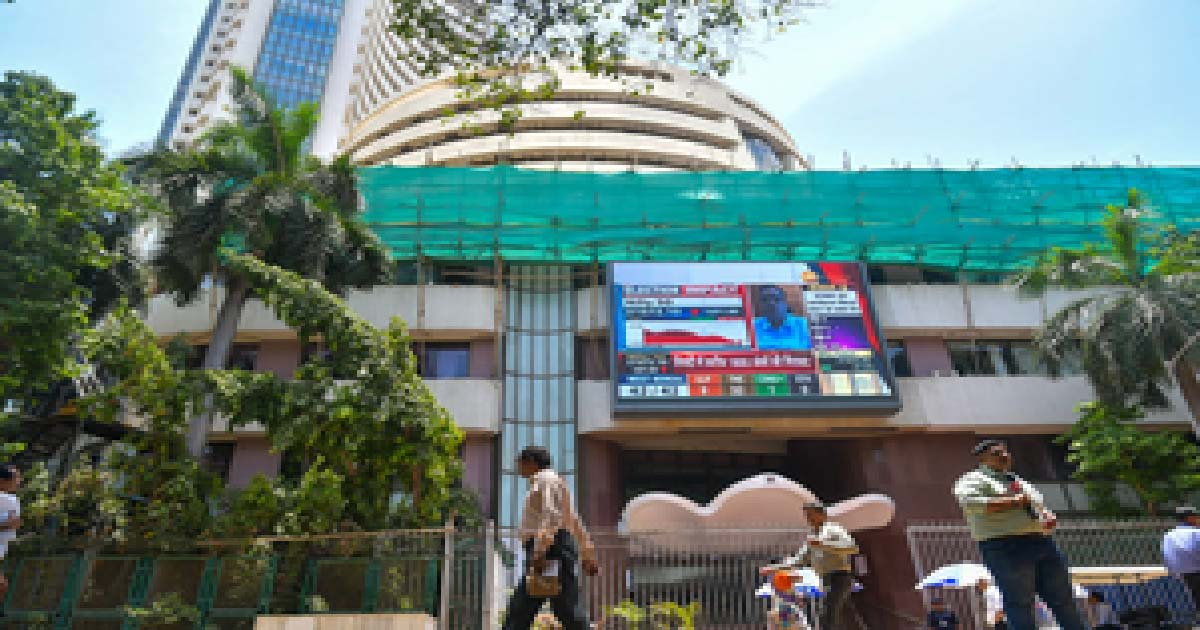Business
How ONDC is set to be India’s UPI moment for e-commerce

arket practices from Big Tech and according to Shireesh Joshi, Chief Business Officer (CBO) and President, Network Expansion for the Open Network for Digital Commerce (ONDC), the goal is to create population-scale inclusion of e-commerce in the country.
With ONDC, a Unified Payments Interface (UPI)-type initiative of the Ministry of Commerce and Industry to promote open networks, the government is trying to create the largest interoperable open platform in a bid to break e-commerce monopolies and build a more democratised digital marketplace by bringing micro, small, and medium enterprise as well as small traders online.
Currently, only 5-6 per cent of India’s retail activity is digital.
There are several limitations and constraints of existing platform based e-commerce that will be solved by unbundling and creating interoperability that will further allow any kind of product or service, whether as B2B or B2C, to be transacted on ONDC,” Joshi told IANS in an interview.
One of the immediate outcomes of this unbundling and interoperability is that every seller will have access to every buyer, and vice versa.
“Scale that was limited to a few players will now be available to everyone and help in democratising. E-commerce majors are also in conversation with us for onboarding on ONDC. This is not an anti-anyone initiative,” Joshi elaborated.
The democratisation and innovation that will result from ONDC will allow all kinds of players to flourish and “we will need all these multiple models of e-commerce to help achieve the goal of population-scale inclusion,” he stressed.
Union Commerce and Industry Minister Piyush Goyal has announced that ONDC will gradually be expanded to more cities in the near future, as it has the potential to connect the entire farm value chain.
The Centre also envisions ONDC as a private sector-led, non-profit company to bring focus on ethical and responsible behaviour while providing for trust, rigorous norms of governance, accountability, and transparency.
According to Joshi, an IIT Kanpur and IIM Bangalore alumnus, for farmers and farmer producer organisations (FPOs), the UPI-type protocol will enable access to a much wider market.
“Your neighbourhood fruit seller might claim that the Apples he sells are from Himachal, or the litchees are from Muzaffarpur. But you may not have a way of being sure. But on ONDC you may be able to buy directly from an orchard in Himachal or UP and be sure,” Joshi noted.
Farms and orchards can become brands too and realise better pricing than as commodities through a multi-tier trading and distribution system.
“Famers will be able access all buyers across the country through a single registration and not have to register with multiple organisations,” he emphasised.
This network-wide buyer access has other benefits too.
For example, it can help determine the best market prices for his products, say the current prices of Himachal apples in Delhi and Jaipur mandis to help decide what price to quote and which order to accept.
“Such a scale will create providers of various kinds of services — packing, warehousing, shipping which will enable cost efficient market reach. Products need not be shipped to markets anticipating demand and risk expiring in case it does not materialise, it can be warehoused and shipped on demand instead,” Joshi told IANS.
On ONDC, farmers will not only sell but also be able to buy seeds, fertilizers, pesticides, growth regulators, equipment and tools.
The initiative has an agri-focused entity in National Bank for Agriculture and Rural Development (NABARD) as one of its shareholders which has helped it solve technical challenges and engage with several organisations in the agri sector.
According to Joshi, this is not a one-time journey, given the agri sector’s complexity and diversity.
“We expect this to be repeated every few months to keep building and adding to the agri solutions stack. At some stage, the ecosystem itself should kick in and ONDC may not have to facilitate after that,” Joshi elaborated.
Besides this, they are also engaging with state governments to promote adoption of ONDC for agri e-commerce.
“Haryana and Madhya Pradesh governments have begun mobilising support for this and we expect more to follow. Central initiatives like National Agriculture Market (eNAM), which is a pan-India electronic trading portal, is also in active discussion with us on evolving the best way forward,” Joshi informed.
Overall, ONDC will enable lower costs and higher revenues for farmers, enabling more autonomy and benefits for a farmer, said Joshi who has been credited with managing large-scale business operations/strategy in India and China, including Hong Kong, Taiwan and South Asian territories.
Business
Indian indices end week in bullish tone over positive global cues

Mumbai, Dec 20: Indian equity benchmarks closed on a strong note this week, snapping a four-day losing streak amid positive global cues stemming from US inflation data.
The market ended the week in a bullish tone with Nifty surging 0.18 per cent during the week and 0.58 per cent on the last trading day to 25,966, after a softer US CPI print boosted expectations of a milder Fed stance.
At close, the Sensex was up 447.55 points or 0.53 per cent at 84,929.
Indian equities were traded in a cautious tone for most of the week, weighed down by persistent FII outflows, rupee depreciation, and heightened global uncertainties.
Further, early sessions also saw pressure from rising Japanese bond yields and expectations of Bank of Japan (BoJ) tightening, which amplified risk-off sentiment across emerging markets.
Bargain hunting and lower crude prices helped large caps drive a late rebound, trimming most of the week’s losses, market watchers said.
Broader indices also rose marginally during the week, with the Nifty Midcap100 up 0.04 per cent, while Nifty Smallcap100 was unchanged during the week. It gained 1.34 per cent at the close.
On the sectoral front, all sectors traded with a positive bias. Major contributions came from Nifty Realty, Auto, Healthcare, and Chemicals, while other sectors also posted modest gains.
Nifty has 26,200-26,300 as stiff resistance levels while 25,700–25,800 levels will act as support zone, they added.
Analysts said markets will likely maintain a cautiously positive bias in near future but remain highly sensitive to global cues.
Key drivers going forward include comments from the global central banks for the 2026 policy trajectory. While sentiment remains constructive, near-term volatility may persist amid uncertainty over trade deal timelines and the Indian rupee stability, they added.
Business
Nifty to touch 29,094 in 12 months supported by durable earnings, strong macro backdrop

New Delhi, Dec 19: India’s benchmark index Nifty is expected to touch 29,094 in one year based on long‑term valuation averages and earnings durability, a report said on Friday.
Wealth management firm PL Wealth said in the report that India enters the end of 2025 from a position of relative macro strength with record‑low inflation, a dovish monetary stance, resilient domestic demand and improved corporate earnings visibility.
“In the near term, large-cap stocks remain preferred due to their earnings stability and strong balance sheets, while selective exposure to high-quality mid-cap names is being added as visibility improves,” the wealth management firm cited its strategy.
Over the next 6 to 24 months, the earnings cycle is expected to broaden across consumption, financials, capex-linked sectors and select industrials, supported by benign inflation, lower interest rates and sustained domestic liquidity.
“India’s current macro configuration is among the most constructive we have seen in over a decade,” said Inderbir Singh Jolly, CEO, PL Wealth Management.
While global uncertainties will continue to create short-term volatility, India’s structural strengths—policy reform, financialisaton of savings and improving corporate balance sheets—position it well for sustained long-term growth, Inderbir added.
RBI’s 25 basis‑point cut to a 5.25 per cent policy repo rate lowered its CPI inflation projections and upgraded GDP growth estimates, signalling confidence in the sustainability of domestic demand, the report said.
The firm also noted FY26 GDP growth projection of 7.3 per cent underpinned by robust infrastructure spending, resilient consumption and key policy measures such as GST rationalisation and income-tax cuts.
The FY26 September quarter earnings season delivered broad-based strength, with several sectors—including hospitals, capital goods, cement, electronics manufacturing services, ports, NBFCs and telecom—reporting double-digit growth in EBITDA and profits.
The firm noted that Nifty earnings per share estimates for FY26–FY28 imply an earnings CAGR of nearly 14 per cent. Domestic institutional investors have anchored markets with record net inflows of over Rs 6.8 trillion year‑to‑date.
Business
Indian stock markets open higher amid positive global cues

Mumbai, Dec 19: Indian stock markets opened on a positive note on Friday, taking cues from supportive global markets, even as benchmark indices remained on track to close the week in the red for the third consecutive session.
In early trade, the Sensex was trading at 84,866.06, up 384.25 points or 0.45 per cent at around 9:20 AM.
The Nifty index was also higher, quoting at 25,926.90, up 104 points or 0.4 per cent. The index continues to trade within the 25,700–25,900 range, reflecting trader indecision.
“Immediate resistance is placed at 25,900–26,000, while key supports are seen at 25,700 and 25,600,” analysts said.
Buying interest was seen in several heavyweight stocks. Shares of TMPV, Eternal, Infosys, Power Grid, BEL, Sun Pharma, and Bajaj Finserv gained up to 1.5 per cent and emerged as the top performers on the Sensex.
On the other hand, ICICI Bank and Bharti Airtel were the only stocks trading in the red during early deals.
Sectorally, all indices were trading higher. The Nifty Healthcare index led the gains, rising 1.14 per cent, followed closely by the Nifty Pharma index, which was up 1.1 per cent.
The Nifty Auto index also gained around 0.5 to 0.57 per cent.
The broader markets mirrored the positive sentiment, with the Nifty Midcap index gaining 0.45 per cent, while the Nifty Smallcap index was up 0.47 per cent.
Meanwhile, investors remain cautious ahead of several key global and domestic triggers.
Globally, market participants are keeping an eye on retail sales data from the UK, wage tracker data from the euro area, and the US Federal Reserve’s balance sheet numbers. On the domestic front, investors are awaiting the Reserve Bank of India’s Monetary Policy Committee meeting minutes and the latest foreign exchange reserve data.
In terms of institutional activity, foreign institutional investors turned net buyers, purchasing shares worth Rs 614.26 crore on Thursday.
Domestic institutional investors also supported the market, with net purchases of Rs 2,525.98 crore during the same session.
-

 Crime3 years ago
Crime3 years agoClass 10 student jumps to death in Jaipur
-

 Maharashtra1 year ago
Maharashtra1 year agoMumbai Local Train Update: Central Railway’s New Timetable Comes Into Effect; Check Full List Of Revised Timings & Stations
-

 Maharashtra1 year ago
Maharashtra1 year agoMumbai To Go Toll-Free Tonight! Maharashtra Govt Announces Complete Toll Waiver For Light Motor Vehicles At All 5 Entry Points Of City
-

 Maharashtra1 year ago
Maharashtra1 year agoFalse photo of Imtiaz Jaleel’s rally, exposing the fooling conspiracy
-

 National News1 year ago
National News1 year agoMinistry of Railways rolls out Special Drive 4.0 with focus on digitisation, cleanliness, inclusiveness and grievance redressal
-

 Maharashtra1 year ago
Maharashtra1 year agoMaharashtra Elections 2024: Mumbai Metro & BEST Services Extended Till Midnight On Voting Day
-

 National News1 year ago
National News1 year agoJ&K: 4 Jawans Killed, 28 Injured After Bus Carrying BSF Personnel For Poll Duty Falls Into Gorge In Budgam; Terrifying Visuals Surface
-

 Crime1 year ago
Crime1 year agoBaba Siddique Murder: Mumbai Police Unable To Get Lawrence Bishnoi Custody Due To Home Ministry Order, Says Report












